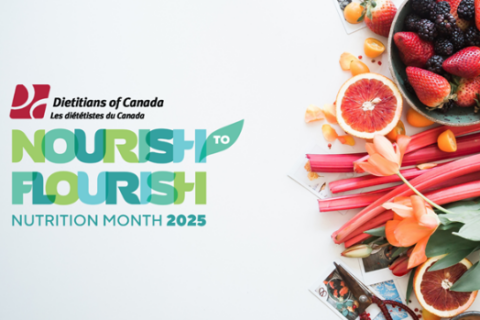My Child Won’t Eat Vegetables: What Should I Do?
Is your child having a hard time trying new vegetables, or refusing to eat them altogether? You are not alone. The vast majority of toddlers and young children will experience a “picky eating” phase (or several…) as they grow and develop their flavour palate. You can rest assured knowing that if your child turns up their nose at vegetables, it is an expected and normal part of their development!
Taste preferences are in our DNA
Humans are born with the taste preference for sweet foods, and an aversion to bitter foods as a way to survive longer! The biological drive to eat sweet energy-dense foods allows for nourishment and growth. The avoidance of bitter tastes, on the other hand, prevented our ancestors from eating toxic or poisonous substances. Pretty cool, hey?
Unfortunately, many of the vegetables we serve can taste bitter (and therefore unpleasant) to toddlers and young children. As a pediatric dietitian and mom of three, I have discovered a variety of strategies that can make vegetables more appealing to developing palates, without bribing or guilting them into it!
Continue to offer a variety of veggies, pressure-free
Here’s a little analogy. When there is a “friend at the party”, we are more likely to relax, engage and have fun! The same effect takes place when we offer “courteous foods” alongside new foods or ones that you know your child is more cautious about. All kids require consistent loving boundaries in feeding, facilitating a safe space to explore, smell and eventually taste vegetables in a way that isn’t rushed or scary.
Did you know it can take up to 20 times (or more) for children to even try a new food? Kids need a chance to build confidence in their ability to eat new foods, without pressure or coercion. Part of that confidence comes from serving “unpopular” or unfamiliar foods (in this case, vegetables) with well-liked or “safe” foods. This may mean offering veggies with shredded cheese on top (or on the side) or adding bread to the menu alongside the steamed broccoli and carrots.
Over time we can help kids to expand their flavour preferences through repetition, by exposing them to the same foods, over and over again, in different but pressure-free ways!
Use creativity when serving veggies
Every child is unique! Each one has different sensory preferences (flavour, texture, smell etc.) influenced by their environment, as well as their personality!
Experiment with how you serve vegetables. Don’t worry, I’m not going to tell you to recreate Pinterest-worthy meal presentations. Over time you will find what works for your child, what doesn’t, and what they are willing to open up to.
Try:
- Cutting vegetables into strips, shapes (with food cutters) or shredded (with a cheese grater)
- Offer veggies with dips (hummus, tzatziki, ranch, or even ketchup! Whatever dip your child likes)
- Roasting veggies with shredded cheddar or parmesan cheese
- Sautéing veggies in a sauce (i.e. teriyaki, sweet Thai chili sauce, or simply butter and salt!)
- Spiralized vegetables such as zucchini, beets and carrots. Try them both raw and cooked!
- Blending veggies into sauces (but be sure your child is a part of this process so they are aware that you are making pasta sauce with carrots and bell pepper, for example.)
- Changing up the temperature vegetables are served. For example, offer frozen peas and corn instead of cooked or raw carrots instead of steamed.
Check out these 20 Recipes for Picky Eaters (plus tips to make mealtimes easier) that include new ways to serve veggies!
Role model eating veggies
In the long run, how you behave and what you eat at the family table will have the biggest influence on your child’s food preference and relationship with food.
No one is perfect! All we can do as parents is to try our best to role model the behaviours we desire to see in our children as they grow.
Involve your kids in choosing and preparing veggies
Get your kids involved in choosing one or two new (or not new) vegetables they like the look of at the grocery store! Ask them to help with washing, peeling, cutting and cooking the vegetables, depending on their age and ability to help.
Give your kiddo a “structured choice” in the vegetables served for dinner. You still decide WHAT is on the menu but you can give them the choice between, say, “broccoli or green beans?”. Another day the question could be “Would you like roasted broccoli with cheese or steamed broccoli with butter?”. Getting kids involved in planning and prepping veggies always will skyrocket the chance of their engagement in what is served!
What if they still don’t touch any vegetables?
First of all, give it time (lots and lots of time) and don’t give up! Repetitive, varied exposures, WITHOUT pressure, are key!
Don’t panic. If they are eating fruit, and a variety of other foods, they are getting the nutrition they need to develop and grow. It’s easy to let vegetable refusal trigger bribing, persuasion, or guilting tactics…I get it! But remember, their positive experience with eating and their relationship with food in the long run is what is most important.
If your parent’s intuition is telling you that there is something deeper going on, or if your child is eating less than 20 foods total, make sure to reach out to your pediatrician and a pediatric dietitian for more individualized support.


